WHY AND FOR WHAT PURPOSE CHOOSE LARCH BRIDGE DECKS?
Larch bridge decks are very useful for all wooden bridge structures. At the customer’s request, we can deliver larch bridge decking planed, sanded, milled edges to the radius. Larch bridge planks, but also smaller timbers are widely used in the production of structural elements of various building structures.
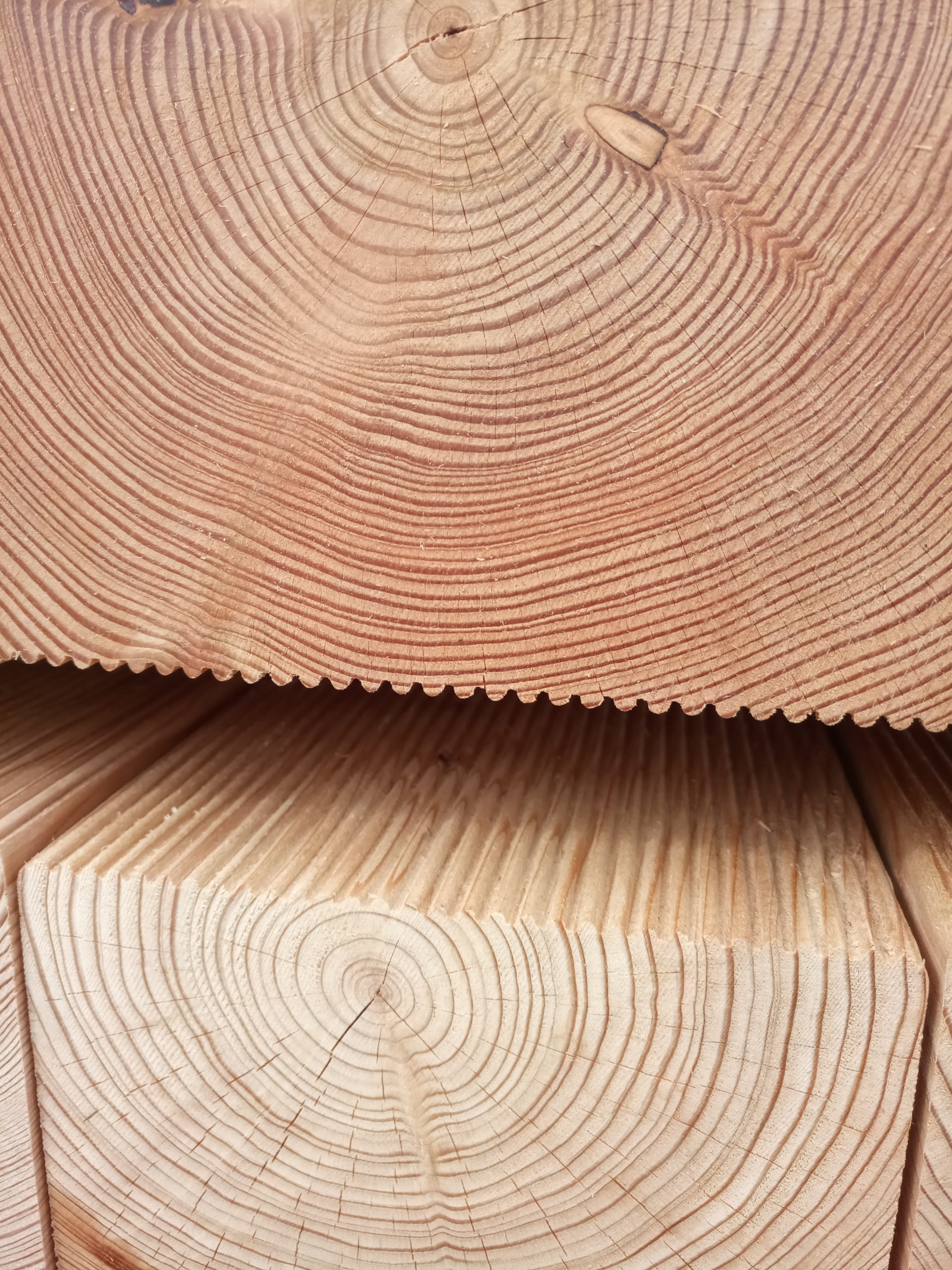
Larch has a very nice and decorative appearance, but especially high durability when used outdoors. Larch lumber has the highest resistance to weathering of our coniferous woods. Larch lumber has a high durability even without surface treatment, because of its high content of resin and oily substances, which impregnate larch so well that it repels water. We also cut larch bridge planks to order in whole metres up to 12 metres in length. We supply a certificate of structural lumber for larch bridge beams.
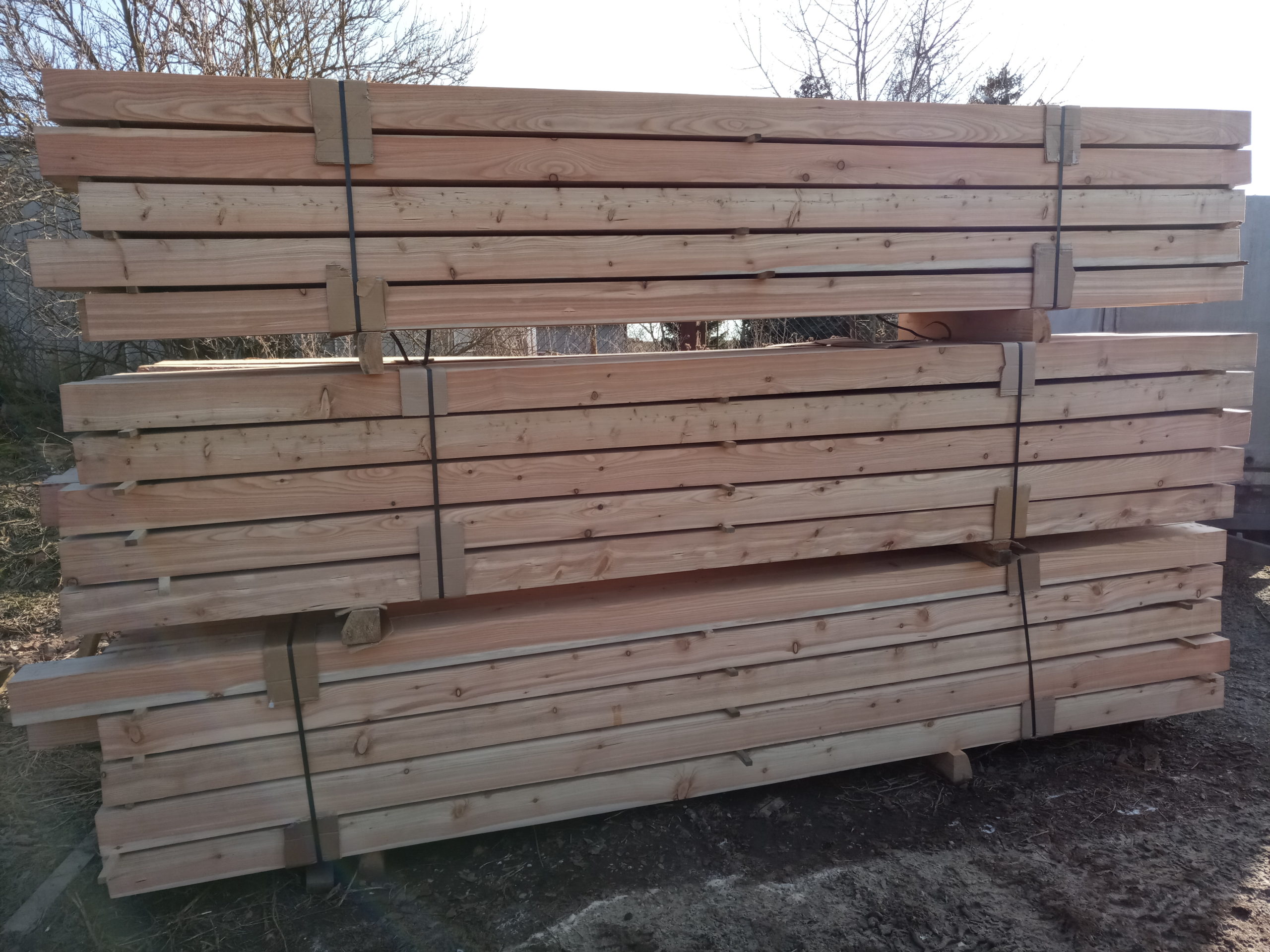
WHICH LARCH BRIDGE DECKS CAN WE PRODUCE FOR YOU?
Rustic look with a greater proportion of twists and curves
Rustic-style larch bridge planks highlight the natural beauty of larch wood without the perfect industrial edge treatment. Beams treated in this way will transport you back several centuries to a time when perfection was not emphasised. The more or less bark-free edges, small and large healthy knots remind you every time you look at this beautiful piece of wood that in the beginning it was a tree that grew for decades, with a natural curve rising behind the light with a lush branching in the crown. Logs with more branches (knots) cut off and not completely straight, but not knots that would cause structural defects, are used to make rustic-looking larch bridge decks.
Rustic larch bridge decking is suitable for larger square and rectangular dimensions of 150mm and over.
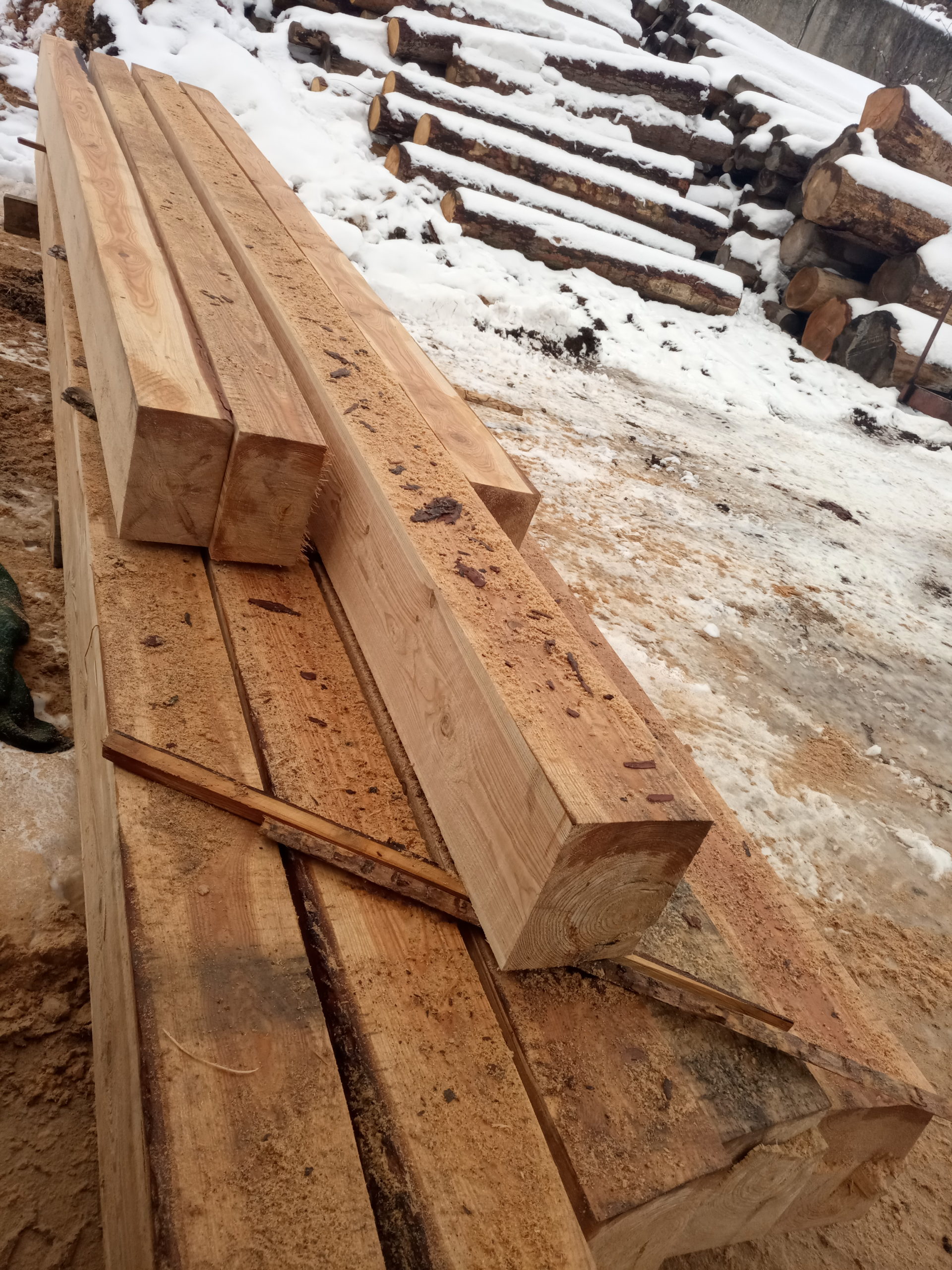
Viewpoint sharp-angled appearance with fewer twists
In the production of the larch bridgeplates we place emphasis on the quality of workmanship, so that all edges are sharp without curves and a large number of large knots. The clean appearance and quality of the larch bridge decking shows the beauty of larch wood and is suitable for structural and design elements of various small and large building elements.
The logs used for the production of larch look beams are first and second pieces from the bottom of the tree with fewer cut branches (twigs) and minimal curvature.
View larch bridge beams should be used from smaller square and rectangular dimensions of 100mm and more.

Freshly sawn (tarred) larch bridge decking with unspecified moisture content
The disadvantage of using untreated sawn timber may be the high water content and the subsequent volume changes and deformations when drying to equilibrium moisture content. Higher water content can also be problematic in terms of increased risk of attack by wood-boring insects, moulds and fungi, but this is to a small extent in larch, as larch is resistant to these attacks, as is oak.
When buying raw timber, it is a good idea to choose the right quality for the application. In general, centre sawn timber, ideally radial with no pith content, will be the strongest and most stable.
On the other hand, incorporating elements made from uncured timber with pulp content may cause undesirable effects in the form of twisting, drying cracks, etc.
This product of basic sawmill processing is not losing its popularity in traditional carpentry constructions, where a relatively wide range of cross-sectional dimensions is applied – their use is in gazebos, pergolas, roof trusses, exterior constructions, larch beams in the garden.
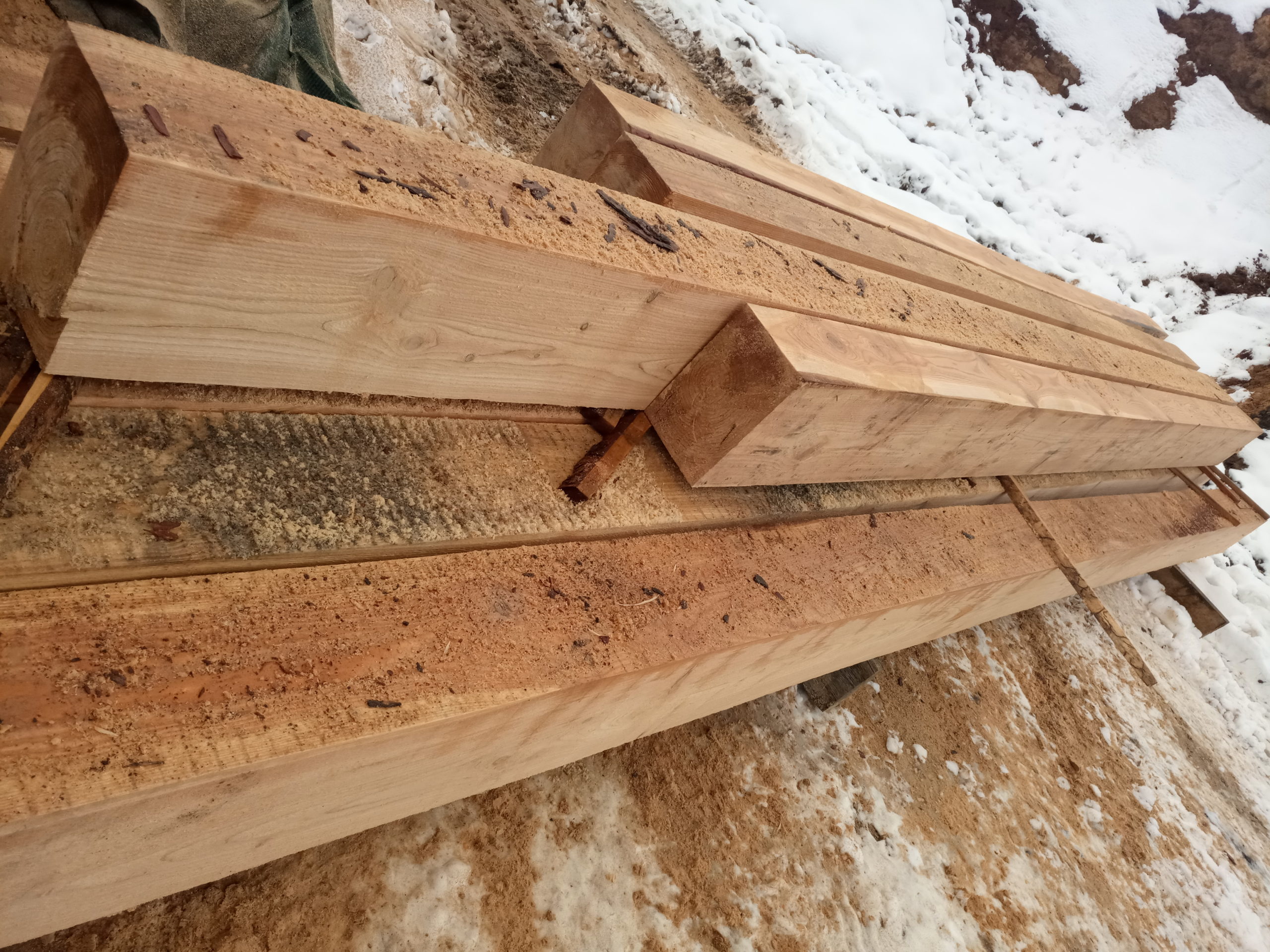
Technically dried, planed larch bridge planks
The profiles are made from technically dried larch lumber with guaranteed moisture content (usually 15% ± 3%). For larger dimensions above 120mm, they are produced as centre lumber or for smaller dimensions, the primary cutting of the log is done with care to cut through the pith (centre of the log). This guarantees higher dimensional stability.
Of course, four-sided planing or sanding and bevelled edges are standard – we supply larch timbers planed, sanded, decoratively milled edges, anti-slip grooves or hand planed.
We will be happy to advise you on the selection of suitable material…
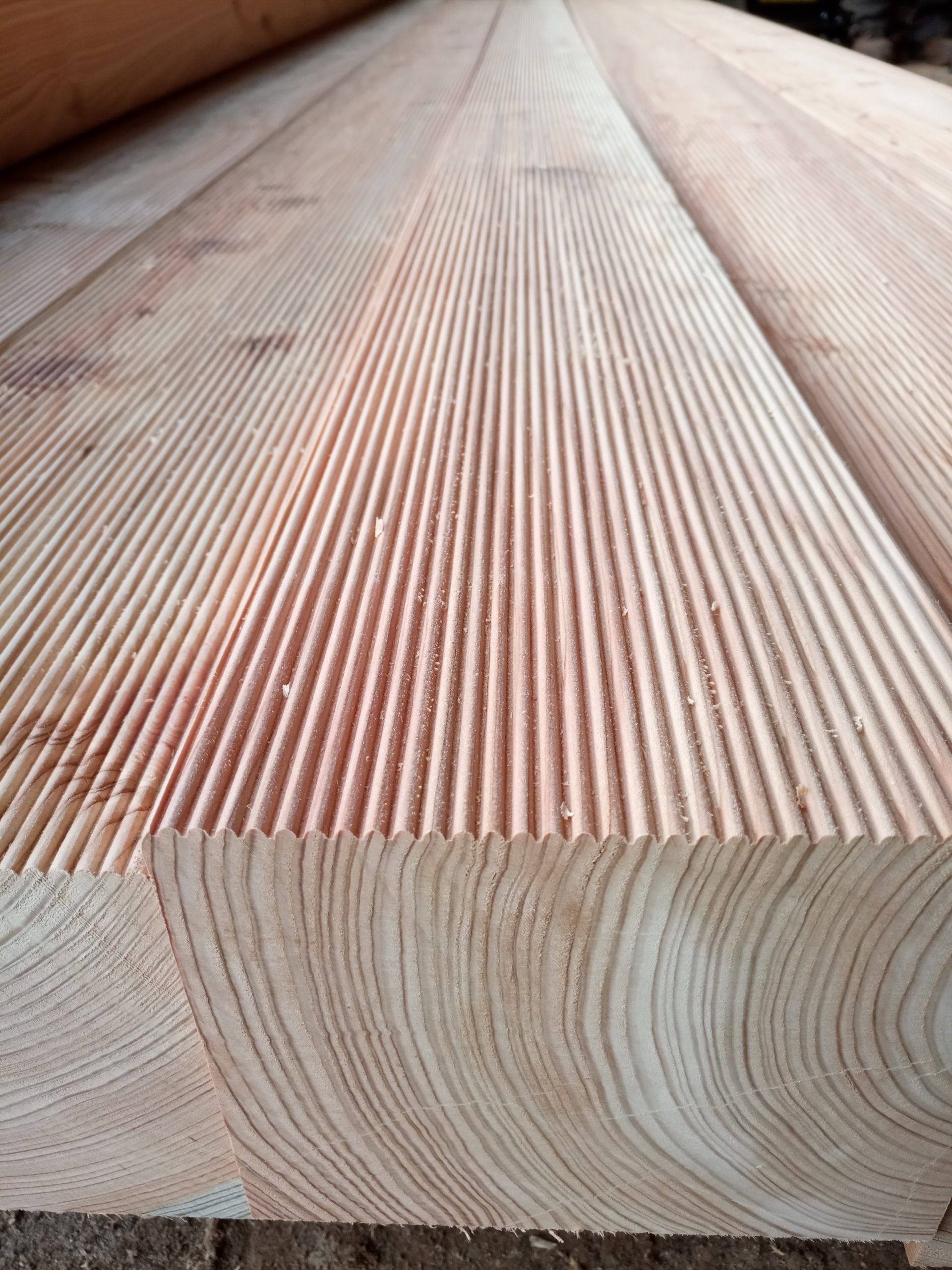
TREAT THE LARCH BRIDGE DECKING OR LET IT TURN GREY?
Larch does not need surface treatment in outdoor conditions because it will last about 15 to 25 years without decay without direct contact with the ground. Untreated larch will turn grey in about 2-3 years due to sunlight and moisture. The colour changes first from the points that are most exposed to the weather and evens out over several years, depending on the conditions. The greying of the wood can be slowed down by treating the wood with transparent wood preservatives. A beam made from larch also does not need to be surface treated, as the larch material can withstand UV and moisture stresses. Over the years, however, the wood will turn grey. Remember that during greying, the tone of the surface may be uneven.
HOW LONG DO LARCH BRIDGE DECKS LAST?
Larch bridge decks, especially those made from Siberian larch, are highly durable and long-lasting. Siberian larch is known for its ability to resist moisture and rot, allowing it to last for decades even outdoors
European larch, on the other hand, has lower durability and usually requires replacement after 5-7 years due to degradation caused by inclement weather
Estimated lifespan of larch bridge decks:
Siberian larch: It can last for decades (10-15 years to be precise in more severe conditions) due to its high density and resin content, which increases its resistance to rot
European Larch: Typically 5-7 years before replacement is needed
The durability of larch bridge decking is therefore strongly dependent on the type of larch, environmental conditions and maintenance. It is also important to treat the wood correctly, which can extend its life
ARE LARCH BRIDGE DECKS WEATHER RESISTANT?
Larch bridge decking, made from larch wood, is generally considered to be weather resistant. Larch is known for its natural resistance to moisture and rot, making it a suitable material for outdoor structures, including bridge decks.
Key properties of larch:
Water resistance: Larch has a high resin content, giving it natural protection against water and rot.
Durability: due to its density and structure, larch is very durable, which increases the lifespan of bridge decks.
Aesthetics: larch wood has a pleasing colour and texture, which can be an advantage for architectural applications.
With proper maintenance and treatment, larch bridge decking can effectively withstand extreme weather conditions. However, it is important to ensure regular maintenance to maximize their durability and functionality.
WHAT TO DO IF MOLD OR ROT APPEARS ON LARCH BRIDGE DECKS?
Identifying the problem
Check the extent of the damage: see if the mould or rot is localised on the surface or if it has penetrated deeper into the wood.
Maintenance and cleaning
Remove mold: Use a hard-bristled brush and a mixture of soap and water or special wood cleaners. You can also use a bleach solution (1 part bleach to 3 parts water) to remove mildew.
Drying: After cleaning, dry the bridgeplates thoroughly to prevent further mold growth.
Repair damaged wood
Cut out the affected parts: If the rot is extensive, it may be necessary to cut out the affected parts of the wood and replace them with new ones.
Apply a protective coating or impregnation to the wood to increase its resistance to moisture and mould.
Prevention
Ensure good ventilation: Make sure that the bridge decks have sufficient ventilation and are not exposed to constant moisture.
Regular maintenance: regularly check the condition of the bridge decks and carry out maintenance such as cleaning and reapplication of protective coatings.
By following these steps, you can effectively address mold and rot problems on larch bridge decks and extend their life.
Send us a quick request
you can also find us at:


